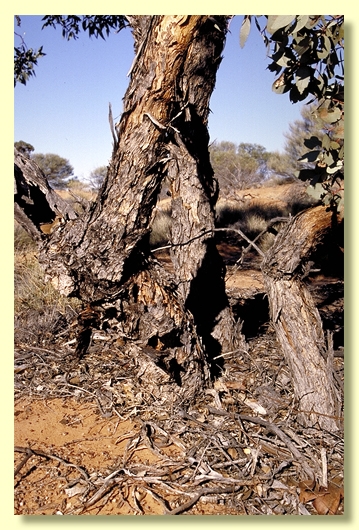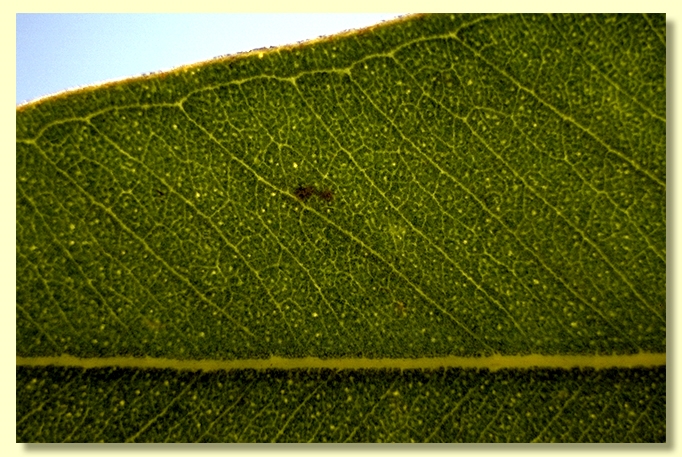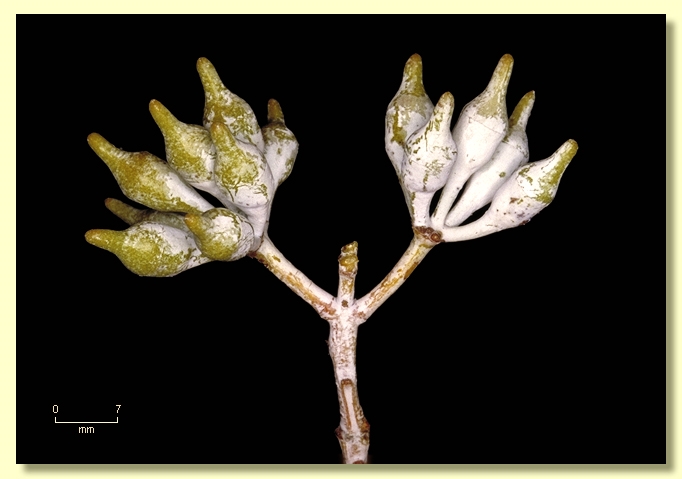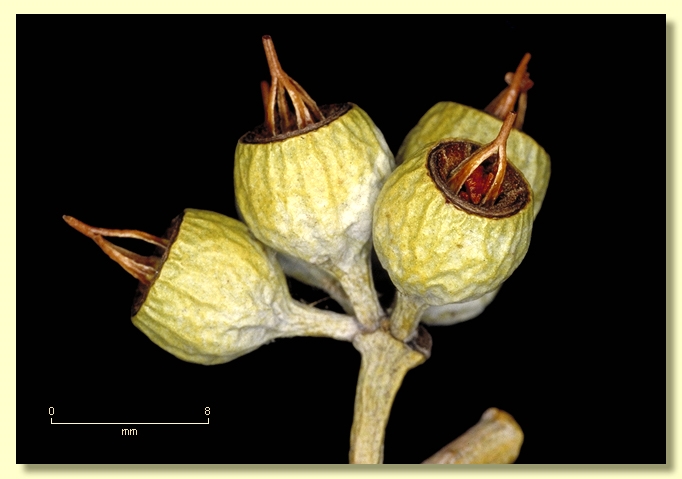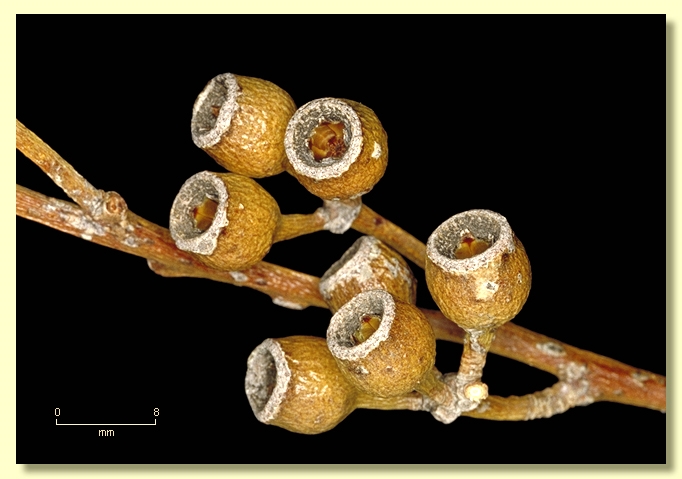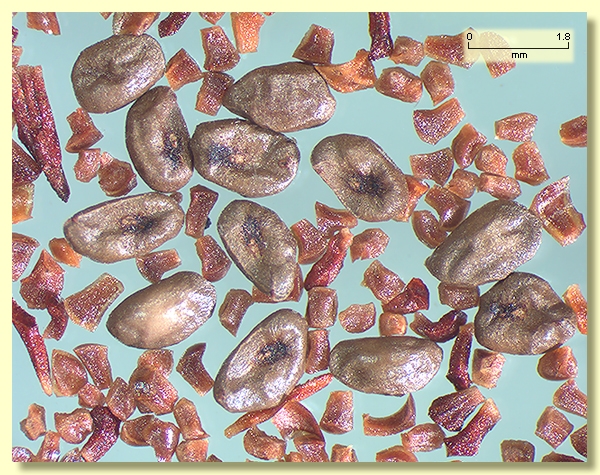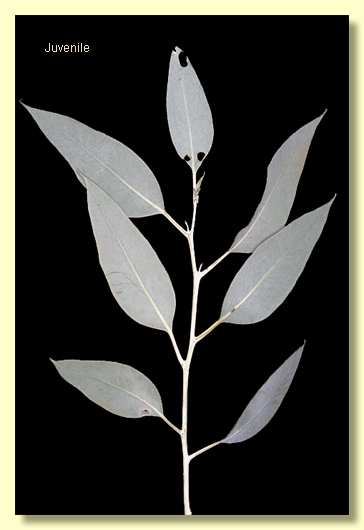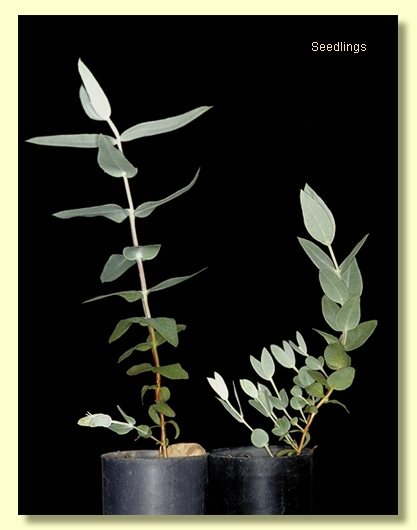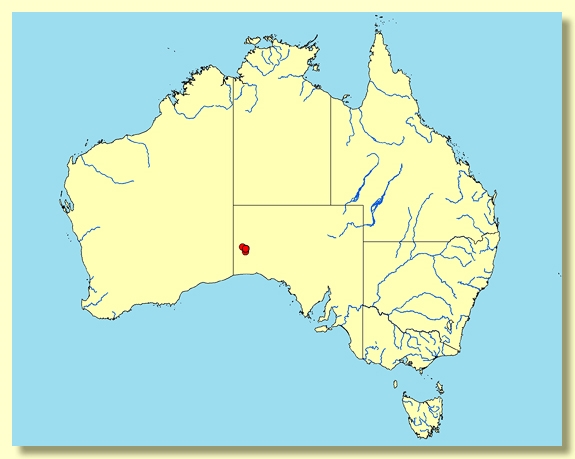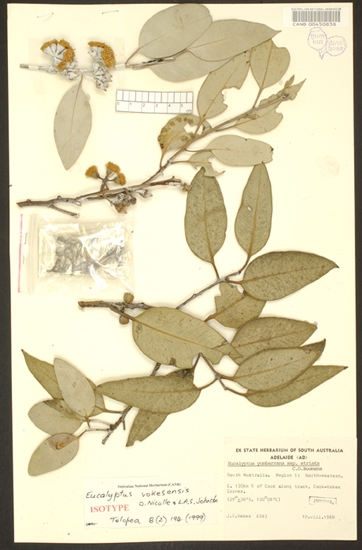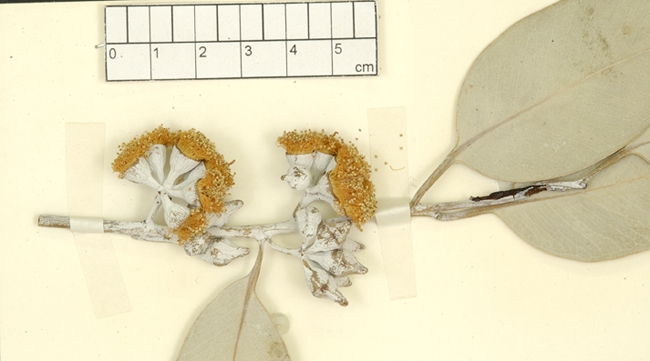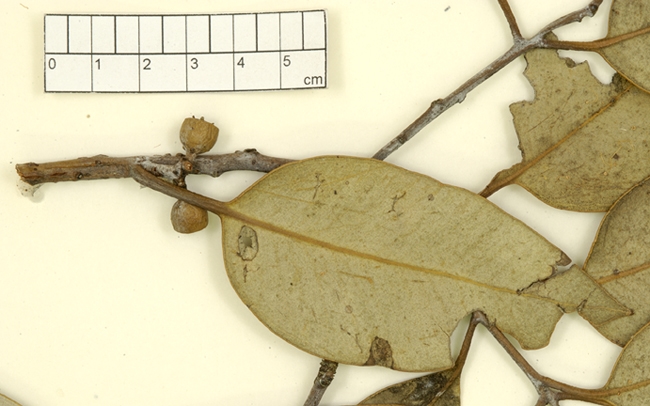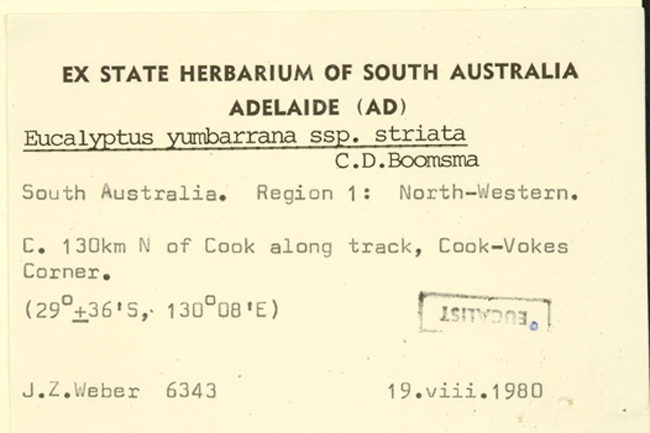Eucalyptus | Symphyomyrtus | Bisectae | Destitutae | Subulatae | Decussatae
Euclid - Online edition
Eucalyptus vokesensis
Mallee to 7 m tall. Forming a lignotuber.
Bark rough, fibrous, grey-brown, on lower trunks and large branches; smooth bark light grey or pale coppery brown or cream, often decorticating in ribbons or strips.
Branchlets lacking oil glands in the pith, always glaucous.
Juvenile growth (coppice or field seedlings to 50 cm): stem usually square in cross-section, glaucous; juvenile leaves sessile, becoming shortly petiolate further up the stem, non-decurrent, opposite for few many pairs, becoming sub-opposite then alternate, ovate to broadly lanceolate or elliptical, usually glaucous.
Adult leaves alternate, petiole 1–2.7 cm long; blade ovate to broadly lanceolate, 7–11 cm long, 2–5.4 cm wide, base usually rounded, sometimes tapering to petiole, concolorous, dull blue-grey to glaucous, side-veins at a wider angle than 45° to midrib, densely reticulate, intramarginal vein parallel to and usually well removed from the margin, oil glands intersectional.
Inflorescence axillary unbranched, peduncles 0.9–2.2 cm long, buds usually 9 to 13 per umbel, rarely more than 15 per umbel, pedicellate, pedicels 0.5–0.9 cm long. Mature buds ovoid (1.2–2 cm long, 0.5–0.8 cm wide), glaucous, scar present, operculum beaked or horn-shaped (0.7–1.2 cm long), stamens irregularly flexed, anthers adnate or weakly versatile, globoid, dehiscing by broad lateral pores, style long, stigma tapered, locules 4, the placentae each with 4 vertical ovule rows. Flowers pale yellow.
Fruit pedicellate, pedicels 0.2–0.6 cm long, cup-shaped to ± barrel-shaped to slightly urceolate, 0.7–1 cm long, 0.6–0.9 cm wide, disc descending obliquely, valves 4, enclosed but surmounted with prominently exserted but easily broken style remnants.
Seeds grey to brown, 1.5–2.5 mm long, ovoid or flattened-ovoid, dorsal surface smooth, sometimes furrowed, hilum ventral.
Cultivated seedlings (measured at node 10): cotyledons Y-shaped (bisected); stems square in cross-section, glaucous; leaves opposite, sessile, ovate to elliptical to broadly lanceolate, 3.7–8 cm long, 2–3.6 cm wide, base rounded to tapering, dull blue-grey to glaucous.
Flowering has been recorded in July, August and September.
A mallee of the deep red sands of the Great Victoria Desert in South Australia, restricted to north and south of Vokes Hill in the Ooldea Range. E. vokesensis is distinguished by its very glaucous branchlets, buds and fruit and by its crown of relatively large, ovate to broadly lanceolate adult alternate leaves.
Eucalyptus vokesensis belongs in Eucalyptus subgenus Symphyomyrtus section Bisectae subsection Destitutae because buds have two opercula, cotyledons are Y-shaped and branchlets lack oil glands in the pith. Within this subsection E. vokesensis is part of the large taxonomic series Subulatae further characterised by globoid basifixed anthers, grey smooth seeds with shallow longitudinal furrows, and fruit with persistent exserted style remnants. Series Subulatae is divided principally into four subseries based on the juvenile leaves, one with spiral, crowded seedling phyllotaxis (subseries Spirales), another with decussate and decurrent seedling leaves (series Decurrentes), another with decussate non-decurrent seedling leaves (subseries Decussatae), and a fourth with disjunct, petiolate seedling leaves (subseries Oleaginae).
Eucalyptus vokesensis is part of subseries Decussatae.
Within this subseries it is closest to E. wyolensis, E. socialis subsp. victoriensis and E. socialis subsp. socialis. E. wyolensis is easily separated by its mature crown of opposite, sessile juvenile leaves. E. socialis subsp. socialis is distinguished by frequently being non-glaucous and by having slightly smaller adult leaves, buds and fruit. E. socialis subsp. victoriensis, however, is not so easy to separate. The best feature is the consistently glaucous stems of E. vokesensis on seedling, juvenile and adult leafy branches. Both taxa have relatively large buds and fruit compared with subsp. socialis, those of E. vokesensis always being glaucous (the fruit may weather to non-glaucous). E. socialis subsp. victoriensis is normally not glaucous and its adult leaves are usually narrower than those in E. vokesensis. However populations of E. socialis subsp. victoriensis from the Wirulla area on the northern Eyre Peninsula may have typically narrow adult leaves but glaucous buds and young fruit.
Within its area of occurrence, E. vokesensis may be confused with another strikingly glaucous species E. canescens subsp. canescens. This belongs to an unrelated group of eucalypts (series Rufispermae ) noted for having oil glands in the pith of the branchlets and glossy ruby red seeds. Also the buds of E. canescens subsp. canescens have a rounded operculum and the juvenile leaves are always petiolate and are soon alternate on the stem.
Eucalyptus vokesensis: referring to the area around Vokes Hill in the Great Victoria Desert north of Cook, South Australia, where this species was first discovered.


